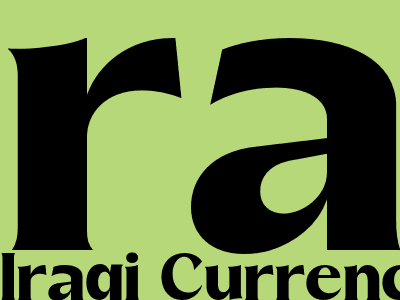
The Iraqi Currency: A History of Instability and Reform
Introduction: The Iraqi Currency's Tumultuous History
The Iraqi currency, the Iraqi dinar (IQD), has undergone a tumultuous history since its introduction in 1931. Plagued by economic instability, geopolitical conflicts, and rampant inflation, the IQD has witnessed numerous devaluations and reforms in an attempt to stabilize its value.This blog post delves into the intricate history of the Iraqi currency, examining the factors that have contributed to its instability and the measures taken by the Iraqi government to address these challenges. We will explore the key events that have shaped the IQD's trajectory and analyze the economic and political implications of these events.
The Early Years: From the Iraqi Dinar to the Saddam Era
The Iraqi dinar was established in 1931, replacing the Indian rupee as the official currency of Iraq. In its early years, the dinar was pegged to the British pound sterling, providing a degree of stability to the Iraqi economy. However, following the country's independence in 1958, the dinar was devalued several times due to economic mismanagement and political instability.
During the Saddam Hussein era, the Iraqi currency faced further challenges. The Iran-Iraq War (1980-1988) and the Gulf War (1990-1991) severely depleted Iraq's economic resources and led to rampant inflation. The dinar's value plummeted, losing over 90% of its value against the US dollar.
Post-Saddam Reforms and the Challenges of Reconstruction
Following the overthrow of Saddam Hussein in 2003, the Iraqi government embarked on a series of reforms to stabilize the currency and rebuild the economy. In 2004, the dinar was redenominated, removing three zeros from its value and introducing a new series of banknotes. Additionally, the government implemented a managed float system, allowing the dinar's value to fluctuate against other currencies.
However, the post-Saddam period also brought new challenges for the Iraqi currency. The country's reconstruction efforts were costly, and the ongoing conflict with the Islamic State (ISIS) further strained the economy. The dinar's value continued to fluctuate, facing periods of devaluation and instability.
Recent Developments and the Future of the Iraqi Currency
In recent years, the Iraqi government has taken steps to address the underlying causes of currency instability. The Central Bank of Iraq has implemented monetary policies aimed at controlling inflation and managing the dinar's exchange rate. Additionally, the government has implemented reforms to diversify the economy and reduce its reliance on oil revenues.
The future of the Iraqi currency remains uncertain. The country continues to face economic challenges, and the political landscape remains complex. However, the Iraqi government's commitment to economic stability and the implementation of sound monetary policies provide some hope for a more stable future for the Iraqi dinar.
Conclusion: The Iraqi Currency as a Reflection of Iraq's Challenges
The Iraqi currency has been a reflection of the country's tumultuous history, shaped by economic instability, geopolitical conflicts, and the challenges of reconstruction. The Iraqi dinar has undergone numerous devaluations and reforms, but the Iraqi government's ongoing efforts to stabilize the currency and rebuild the economy provide some hope for a more stable future.